Gender balance was hardly ever achieved among the enslaved. In 1704, of the 311 enslaved, 68.8% were men, while 31.2 % were women. In 1711, of the 370 enslaved, the proportions were respectively 64.8 % and 35.2 %. After they arrived in 1714, the Lazarist missionaries insisted on the children of the enslaved being born to couples united by the Church. For this to become possible, those governing, as well as the masters, needed to agree, bringing in the same number of women as of men into the colony, and making sure that this balance between the sexes would be applied on each estate. When the decision was taken to launch the growing of Moka coffee, this policy seemed acceptable, and the shipments of slaves contained slightly more women. In 1735, the imbalance between the sexes appeared to decrease. Of a total of 7,057 enslaved, 54.2% were men, with 45.8 % being women.
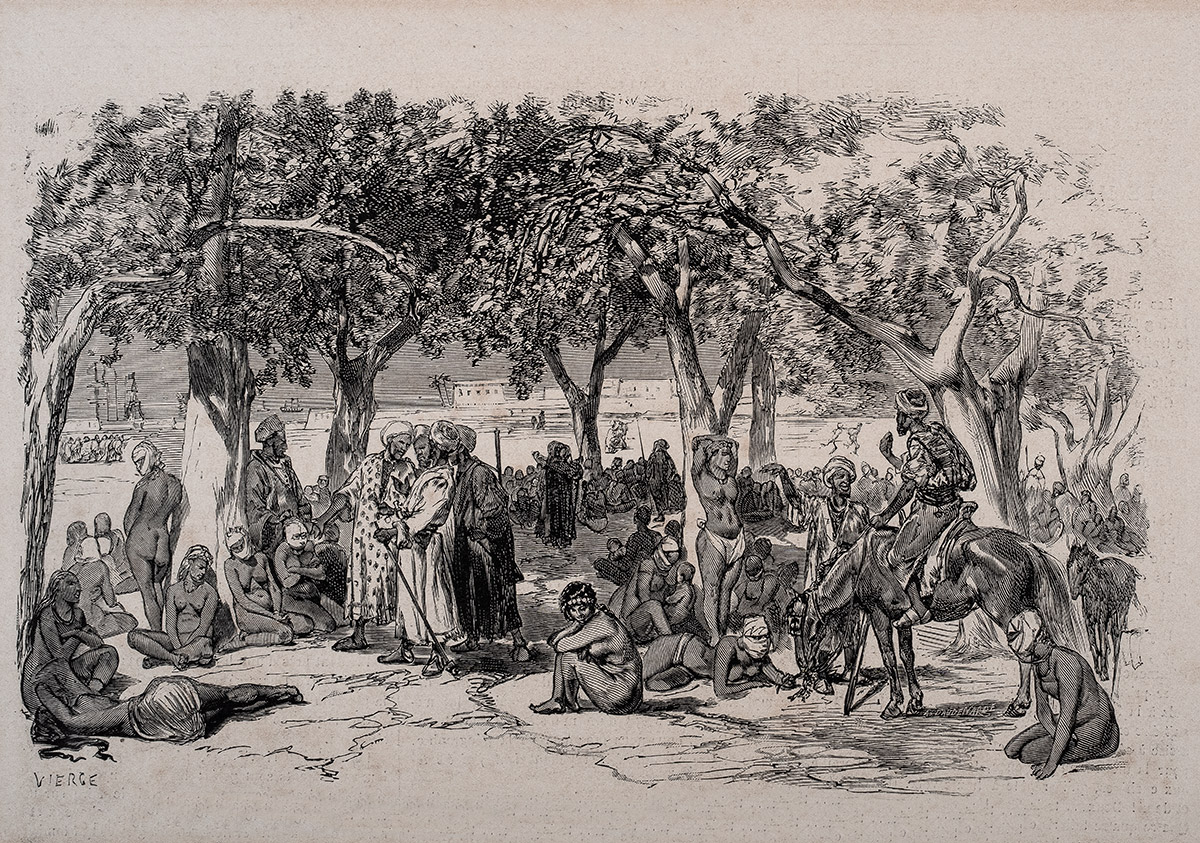
In 1735, the imbalance between the sexes appeared to decrease. Of a total of 7,057 enslaved, 54.2% were men, with 45.8 % being women. However, this progress was temporary. For want of any true cooperation from those taking advantage of the system, the missionaries failed in their attempt to set up an organised society and reduce the tensions between the sexes within the groups of the enslaved. This certainly explains why enslaved women very quickly became victims of acts of violence, perpetrated both by the masters and the enslaved men. The insufficient numbers of women, rather than resulting in them being treated as precious, having a value and respected, led to them becoming a prey, frantically sought after and in general obtained through acts of violence.
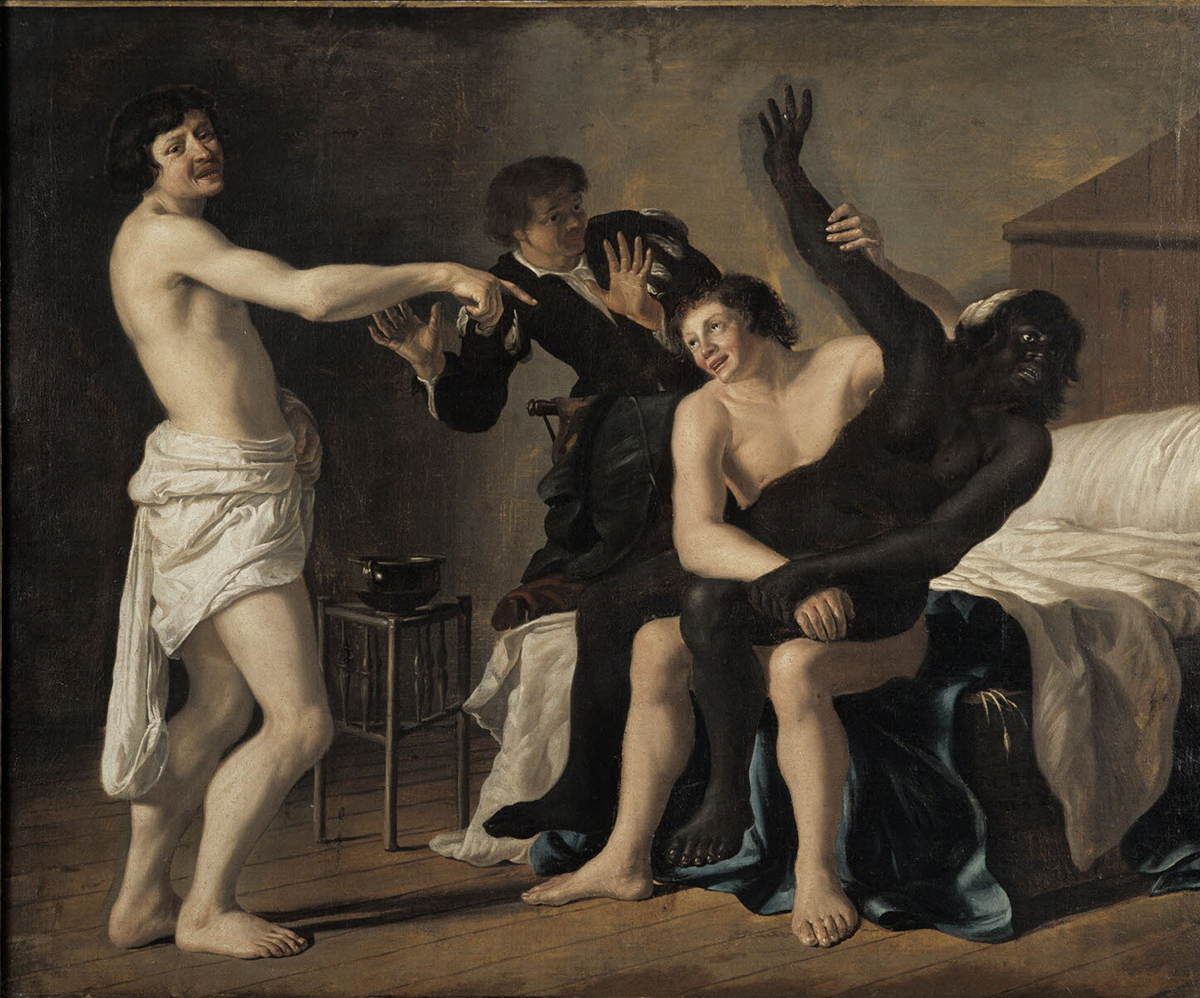
During the second half of the 18th century, the imbalance became greater once again and until the abolition of slavery, there was little change.
In 1826, of the 63,447 enslaved, 65% were men and 35% women. In 1836, the effects of the clandestine slave trade were reflected in the general increase of the slave population. The increasing number of men arriving through the illegal slave trade had an influence on the population of adult slaves, the group now consisting of two men to one woman. Of the 69,296 enslaved, 65% were men to 35% women. A small adjustment to this imbalance occurred immediately before the abolition of slavery. In 1842, the enslaved population consisted of 65,915 persons, of which 62.6% were men and 37.4% were women. In 1847, of the 60,260 enslaved, the proportions were 61.6 % to 38.4 %.
Enslaved women, objects of dominance by their masters, were also, through circumstance, victims of violence perpetrated by their male companions. To escape from the violence of their masters, women slaves could choose to rebel by illegally achieving freedom. Tensions between male and female slaves were very common and many enslaved women actually preferred to remain single. The first reason was that those enslaved could not marry without their masters’ authorisation. The situation of those wishing to marry became more complicated when the two persons concerned did not belong to the same master. Also, as there were a few women, those forming partnerships without being married were not mistreated, since their partner would be afraid of them leaving. However, when they married, on the day of the wedding both of the partners promised to be faithful and were informed that if either of them did not respect this promise, he or she would be whipped in public by the other spouse. In the event of the wife being unfaithful, the husband would prefer to punish her in their home behind closed doors, thus avoiding being the object of mockery from the group of the enslaved. However, for the enslaved of both sexes, marriage had no other consequences, since both the man and the woman remained the property of the master, who could dispose of the children as he wished. Through remaining unmarried while living in a partnership, women slaves refuse to accept the dominance of the males in the society. Slavery resulted in the weakening of human beings, to the extent that male slaves, who were of no greater value than women slaves, could, through exercising violence on the weaker members of the society (the women and children), find a way of imitating the dominant members of the society, a means of feeling important through inspiring fear.
Agriculture being the main activity contributing to the economy of Bourbon island, the majority of the enslaved women were farm workers, with the others working as domestic workers. When the French East India Company decided that the island’s population was to grow Moka coffee, a number of women were given the task of making mats for drying the coffee beans, vacoa sacks for export of the product, becoming ‘mandares’: women slaves specifically entrusted with these tasks.
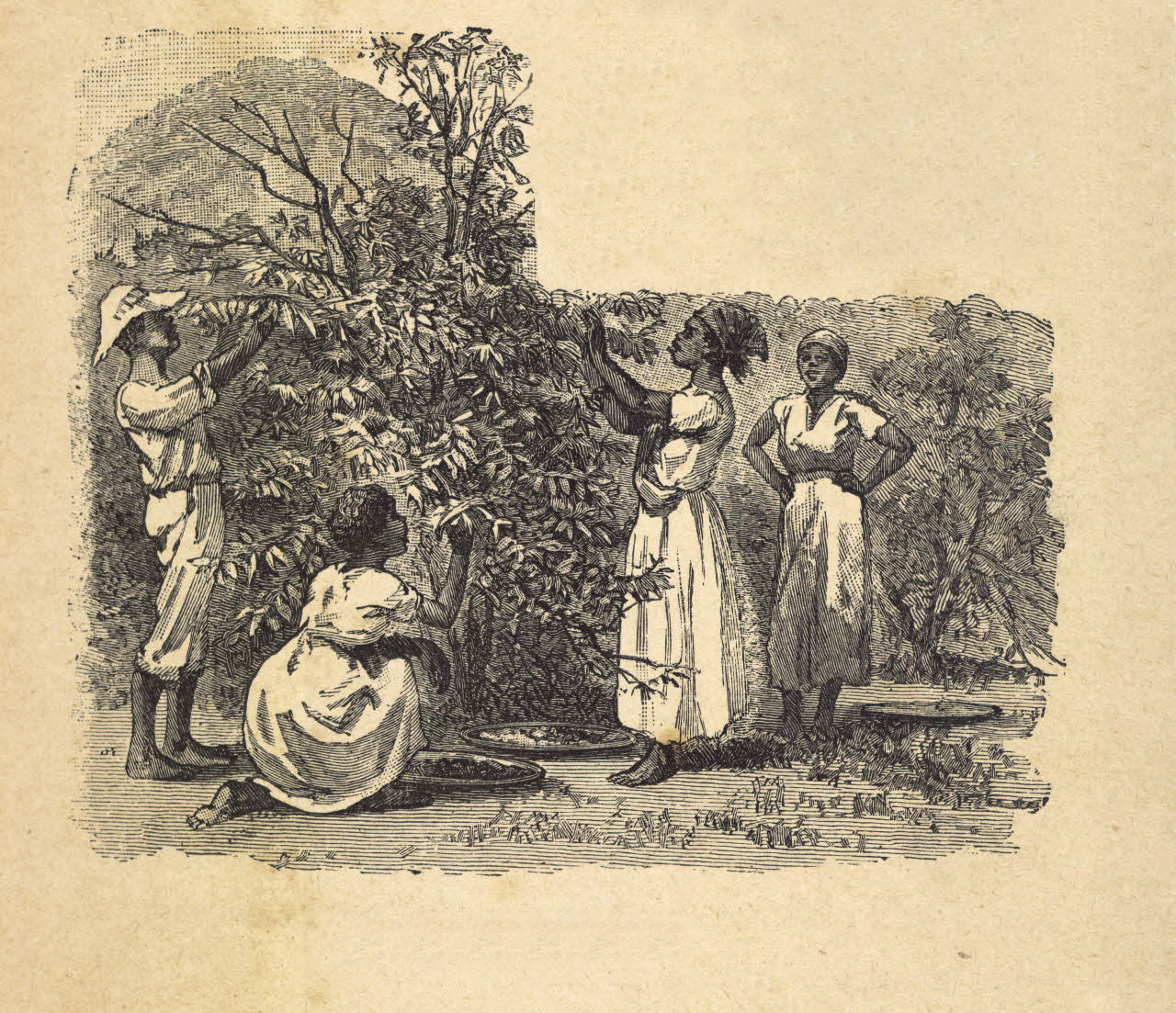
While the proportion of women in the slave population varied between 31 and 35%, when industrial production of sugar was developed on the island, the average number of women on the plantations was lower, with just 26.8%: hardly more than a quarter of the total population. To increase productivity, owners preferred to purchase men. The situation changed slightly as from 1836, with the proportion of women reaching 30%. During this period, certain sugar producers (30 sugar estates out of 48), purchased more women (+45.6%) than men (+22.3 %). On 28 of the sugar estates, the proportion of men to women changed due to the increase in the price of slaves, the decrease in capital resulting from the purchase of machines and the fact the cost of women was lower. In the sugar processing plants, women were of little use. Generally, they took care of the sugar-cane delivered before being taken to the processing plant, as well as the sacks of sugar for export.
We must not forget their function as wet-nurses. If a master’s wife could not breastfeed her baby, an enslaved women who could do so would act as wet-nurse. A special relationship was created between the nurse and the baby. Within the colonial workshop set up under the July Monarchy in 1771, the wet-nurses, that is to say, enslaved women who were pregnant or breastfeeding, were the objects of debate. According to the decree of 12th February 1833, Black women were considered as wet-nurses from the seventh months of their pregnancy until the sixth month of breastfeeding. As from the seventh month of their pregnancy, they were considered as being less productive and received special treatment in order to avoid accidents and limit stillbirths. As from the seventh month of breastfeeding, they were sent back to their original tasks. In 1833, a wet‑nurse centre was set up inside the lazaretto at the foot of Cap Bernard and its surveillance was entrusted to a reliable woman slave. From the seventh month to the ninth, the wet‑nurses were given the tasks of producing cloth, baskets, children’s clothes, trousers, shirts, and bolsters, as well as repairing hospital linen. Wet-nurses could be sent for one year to specific masters who requested them, for 30 francs per month, to be paid to the colonial Treasury .
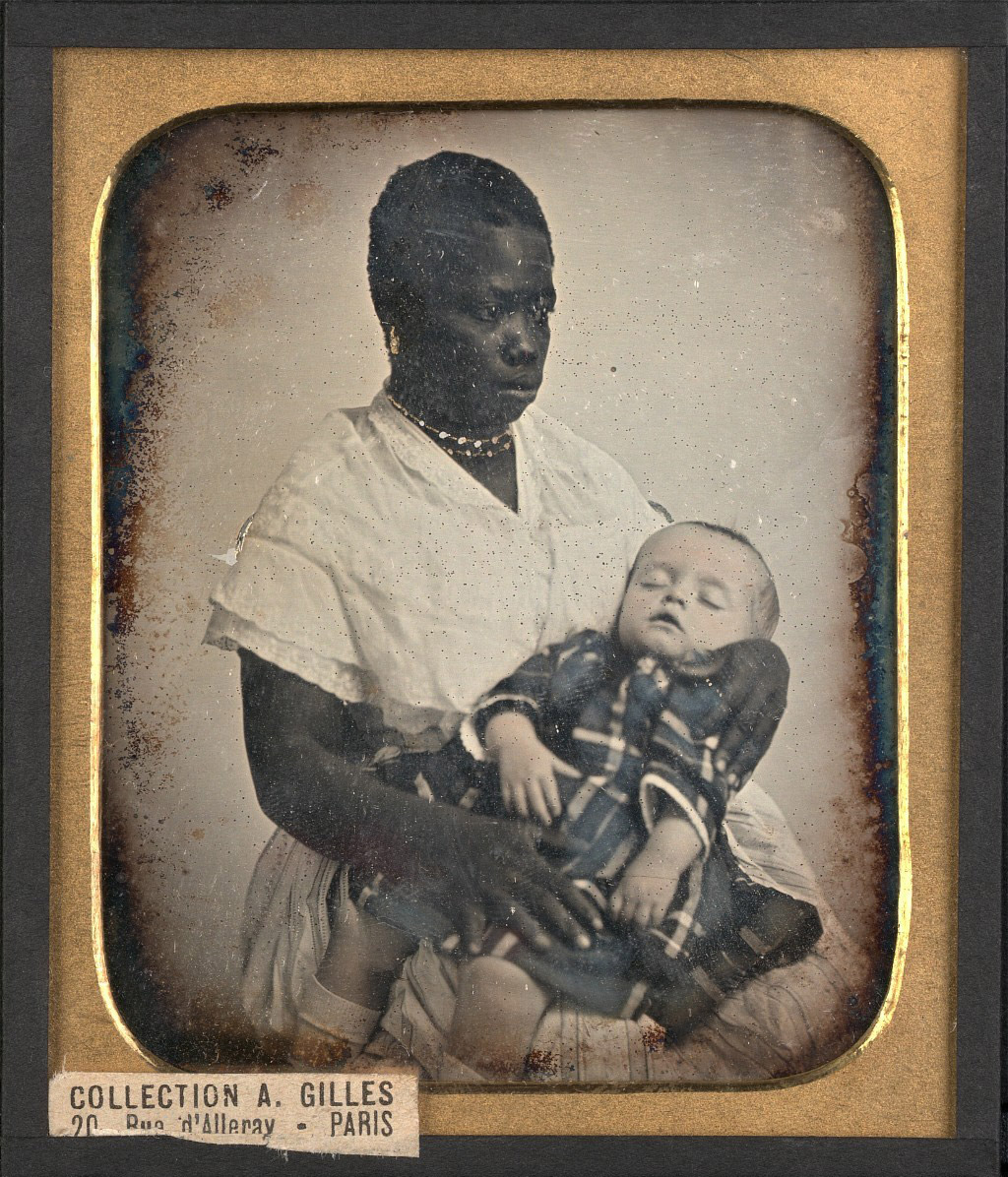
Among the king’s slaves, certain women slaves worked for the Navy and others at the hospital or the warehouse.
At the start of the restoration period, the workshops of the town council of Saint-Denis consisted of 73 slaves: 35 men, 21 women, 10 young boys and 7 young girls. Among the women having defined professions, 10 were agricultural workers, Suzanne, a 27-year-old Black woman, was employed by the local government and 6 were wet-nurses. All the women in Saint‑Paul were labourers and in Saint-Pierre, the town workshop consisted of 27 women, including mixed-race women such as 23‑year-old Euphémie, who was epileptic, Françoise, aged 71, Marie Joseph, aged 54, Marie, aged 77 and Louise, aged 59, all disabled .
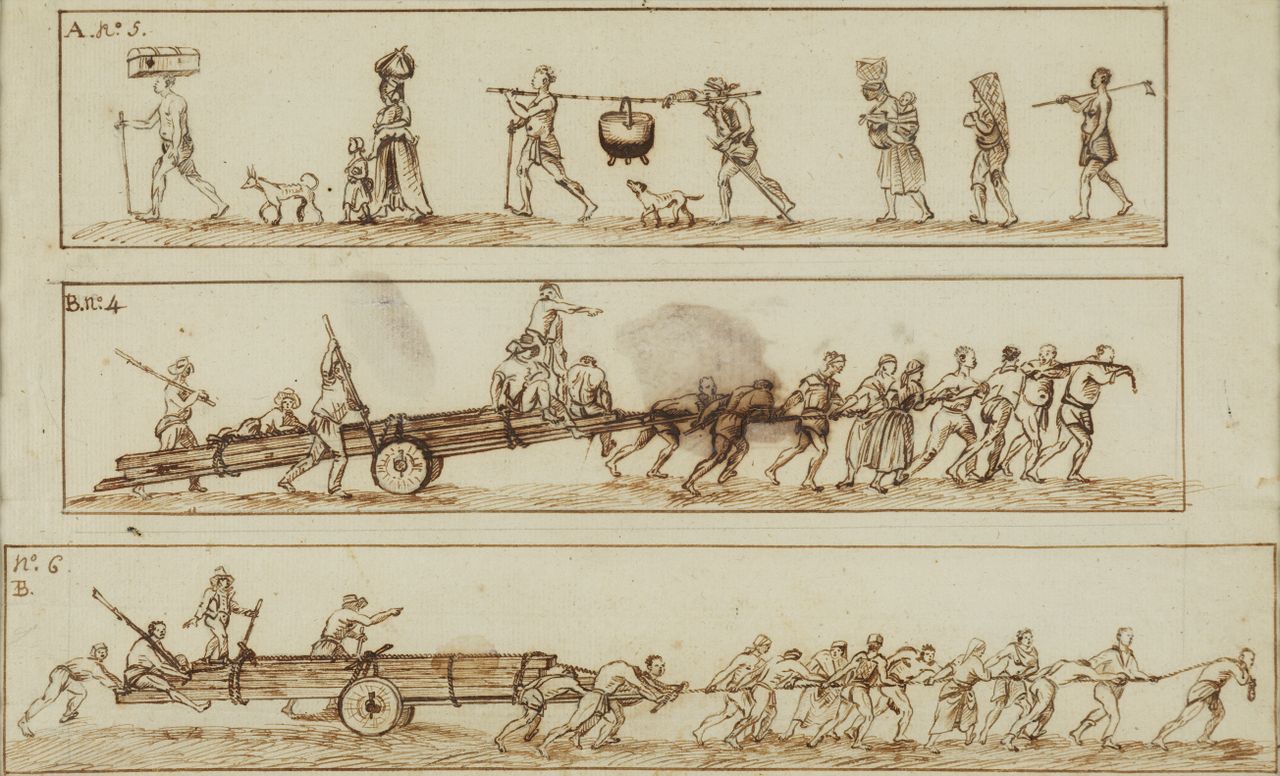
During the revolutionary period, a few enslaved women were tried by the court, either because they had relations with men considered suspicious, or because they spoke out in favour of the British, proof that they took an interest in politics. In fact, they believed that if the island were handed over to the British, they might be freed. On 26th February 1800, Marie Anne was accused of declaring that she was pleased to see the arrival of the British, as well as of having contact with Romain, a consiprator .
The enslaved had a single aim: achieving their freedom and those who were truly determined would decide to take action and escape to the higher parts of the island. If caught within 30 days, they were punished directly by their master, but if caught after the period of 30 days, the punishment would be meted out the King’s or the Republican legal system. A first offender would have his or her ears cut off, the fleur-de-lys would be brandished on his or her shoulder, and they would be flogged. The second time, they would have their thigh cut, with a fleur-de-lys brandished on the other shoulder and they would be flogged. The third time, they would be put to death. The women would exercise the same determination as the men. On the 16th of June 1785, Marie, a Madagascan slave belonging to Mr Ferrière, was captured following a short period of freedom, but was not discouraged by this initial failure and she became a long-term fugitive until her death. During the period of the Royalty, third offenders were no longer put to death. The sentence was transformed on appeal to that of life imprisonment, and she benefited from this positive change in the legislation.
Apart from fugitive slaves, very little information remains concerning the island’s enslaved women. We can mention Fanny, freed just before the 1789 Revolution, mother of the poet Auguste Lacaussade; Delphine, born in Sainte-Marie on 7th August 1809 and named Hélod, emancipated in 1835, seamstress in Saint-Paul, deceased on 13th May 1836; Cécilia, who died in Saint Benoît at the age of 20, daughter of the slave Janvier; and Flore, a slave working as a nanny for the wife of Patu de Rosemont and their children at la Rivière des Roches.
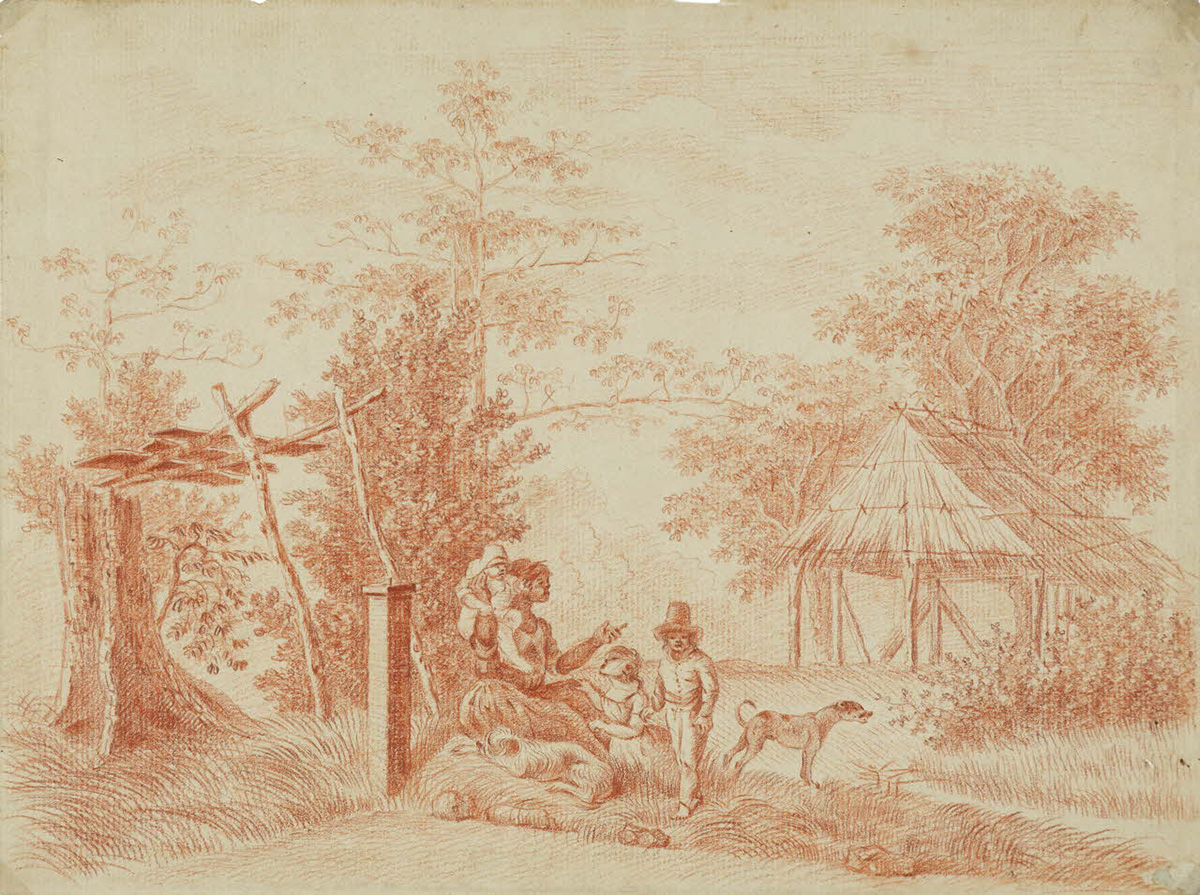
The oral tradition handed down by fugitive slaves, known to the whites living during that period and recorded in writing by two of them – Eugène Dayot and Auguste Vinson – gives us some information concerning certain women slaves. We know from actions carried out by long-term fugitive slaves originally from Madagascar that they were steeped in the mythology of their country, and that they wished to continue to respect these traditions. The intellectuals of the second half of the 19th century easily considered as mythical the figures of the complementary fugitive slave couple Anchaingue and Héva.
Héva does everything in her power to be able to freely express her love, making sacrifices and taking on responsibilities to live with Anchaingue.
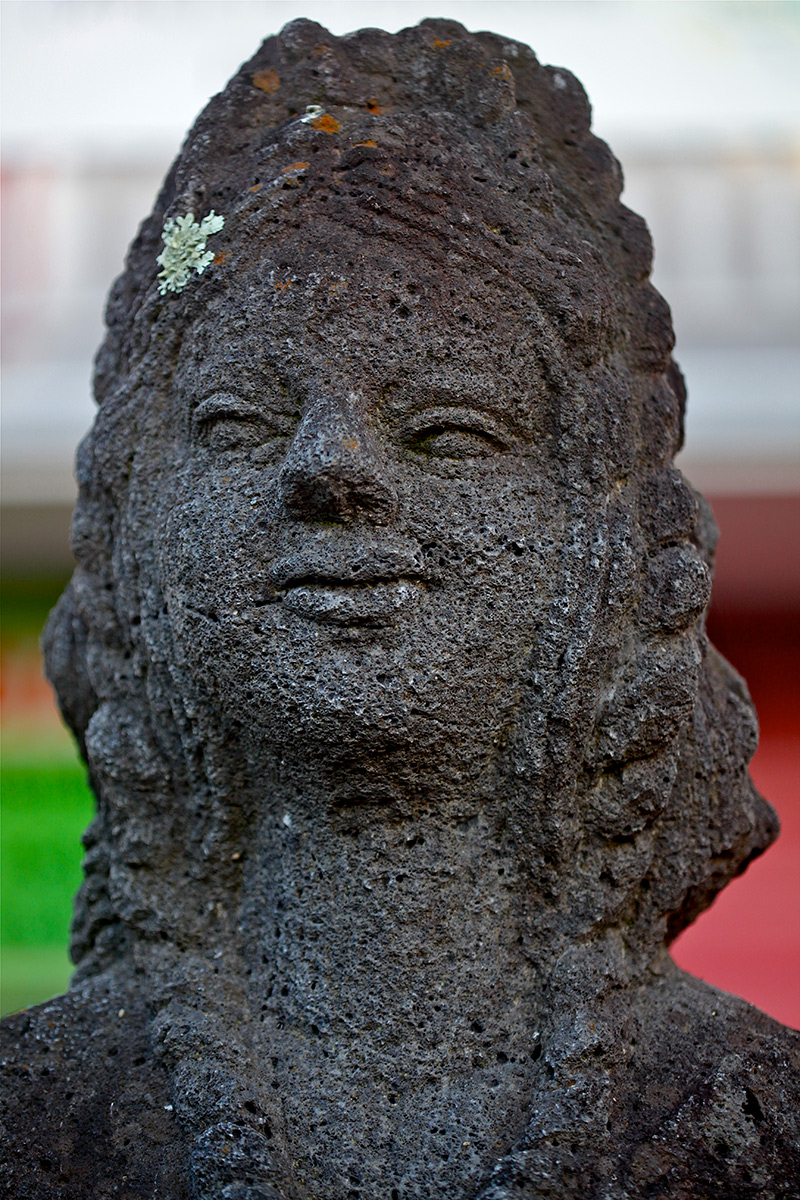
Channeling all their energy into their life in the hermitage perched on its remote mountain peak, Anchaingue and Héva, two voices of freedom, are faced with the same dramatic events, as well as the same desire to reconstruct a social structure. Though living isolated from the outside world, they are satisfied with what they have: the essential harmony between them. Mother Nature in her generosity satisfies their needs as regards, water, food and medicinal plants. Their gardening activities provide them with what they need to survive. Above all, they are free to come and go and to take their own decisions. While living in constant fear of being captured by slave hunters, they are no longer subject to the constant appalling human pressures of the plantation society. The remoteness of their existence reinforces their love for each other and their salvation depends on their ability to define and construct concrete projects and the capacity to listen and understand each other. Their entire existence has made them inseparable.
Through their experience as individuals living freely but illegally, they communicated an essential message, first of all concerning the need to live in harmony and not reproduce the repulsive model of the coastal zone and not to live permanently in conflict, as well as a message of responsibility and a spirit of harmony. Thanks to them, the mountain zones became the area where the island’s initial identity was preserved, that is to say harmony to the exclusion of violence and a spirit of forgiveness.
In the tradition of the fugitive slaves, the figure of La Marianne is an original one, since she represents the ties between Western and Eastern culture, between the ideals of the French Republic, defended by Lemarchand, and the Republic set up by the fugitive slaves.
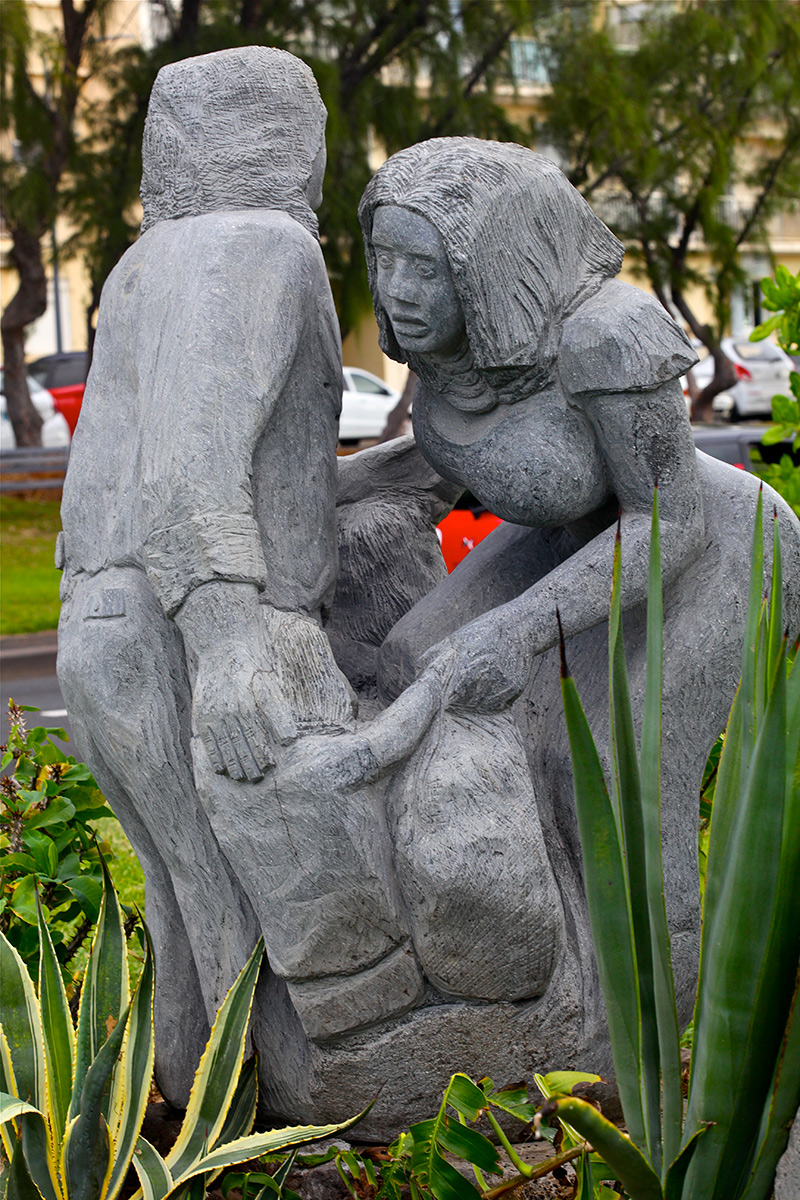
In her novel Sortilèges créoles, Eudora ou l’île enchantée (‘Creole Spells, Eudora or the Enchanted Island’), Marguerite-Hélène Mahé, writing towards the end of the colonial period, suggests that a detachment of slave hunters, composed of the old man Caron , a survivor of the old group of hunters led by Mussard-le Vieux (Mussard the elder), captures Anchaingue and his five children .
Another character, depicted in the oral traditions transcribed by the same author, provides us with proof of the fact that the culture of those enslaved was not totally rejected by the society of the masters.
The character named Kalla, referred to in popular tradition as ‘Grand’mère Kalle’ (Granny Kalle), is associated with the natural and animal world, the world of the night and of doom. She is the “Too … too … toot” beast, hooting coot-like, the bird of ill omen and harbinger of death. Kalla is a young African slave-girl, a gift from Mr de Kérouet for his daughter Eudora, to console her following the departure of her childhood friend François Mussard, a poor European. Initially a playmate, Kalla then becomes ‘a Black household slave’, leaving the slave camp to live under the same room as her mistress. Through her, the culture of the slaves filters into the master’s house. The Black slave-girl Kalla and her mistress Sylvie both take on each other’s culture. She remains faithful to her mistress throughout her life. She even asks God, through his grace, to warn Eudora after her death of any dangers that might threaten her or her descendants. Eudora reproduces the story of her ancestor Sylvie. When her mistress is mistakenly captured instead of her by the followers of de Zélindor, Kalla’s lover, she raises the alert so that the slave hunters will deliver her as quickly as possible. During this struggle, Zélindor attempts to kill François Mussard. Injured by Eudora, he succeeds in escaping, but is finally caught by the hunters. Tried by the court, he is sentenced to death. Kalla accepts the sentence, but is extremely concerned about the consequences of the punishment on Zélindor’s body following his execution: the funeral ritual of the African slaves not having been respected, she knows that he will be deprived of contact with his ancestors and she fears this disgrace will affect his descendants. Her concern becomes even more intense and appears justified when she learns that before his execution, Zélindor pronounced a curse against her. Before the crowd, he cried out that she had “betrayed the race” and called on his men to take revenge. To reassure her, Eudora promises that she will ask for Masses to be celebrated to appease the soul of the man she had always loved. Kalla is indeed seized by the fugitive slaves, following the wishes of their chief Zélindor; they hurl her into the precipice at Entre-Deux. Gérard de Nadal, Eudora’s fiancé, who is far from faithful, goes crazy and commits suicide on the very same spot. This coincidence is interpreted by some as a sign of Kalla’s evil powers. They consider that in this particular spot, the dead could seize the living. Zélindor’s curse has been borne out and Kalla belongs to the reign of the damned. Eudora’s only wish is to provide a tomb for Kalla so that her soul will not be condemned to roam aimlessly and she falls ill. François Mussard, who was initiated into speleology when studying in France, decides to explore the cave with the aim of finding any human remains there. In this way, he achieves Eudora’s wishes.
Going beyond the adventures of Kalla, what is worthy of interest is the fact that the concept of the human soul, as experienced by the enslaved, spread to the other groups of the society. This somewhat surprising permeability of beliefs created bonds between those who were divided by the economic system, building bridges that went beyond the walls put up through the period’s social structures and favouring connections.
Marguerite-Hélène Mahé also draws a seductive portrait of Rahariane, who became Zélindor’s companion when he lived as a fugitive. She has a “fertile and savage beauty. Tall, strong, light-featured and treading the earth as if to extract its sap. Her long legs, generous hips, all elements that contributed to supporting her chest, curving perfectly in its fullness. Her hair, divided into fine plaits, glistening with coconut oil and gathered up in a crest, surrounded her small head with its full lips. Her straight nose and her light brown skin were all signs of the distinct Hova race.”
While the written sources retain traces of the few enslaved women who did disturb the colonial order, the oral sources bring out of oblivion those who decided to escape and illegally achieve their liberty, risking their lives, proof that for the enslaved liberty was a precious priceless gift.